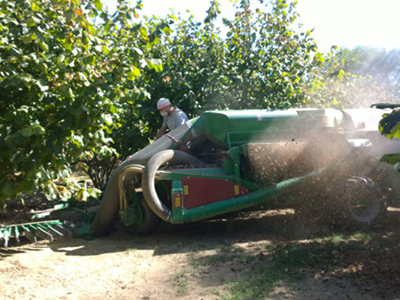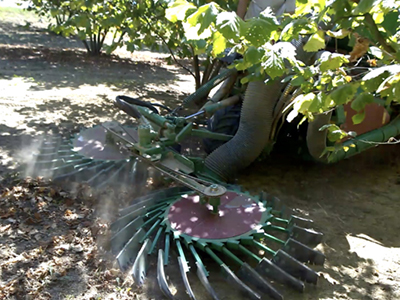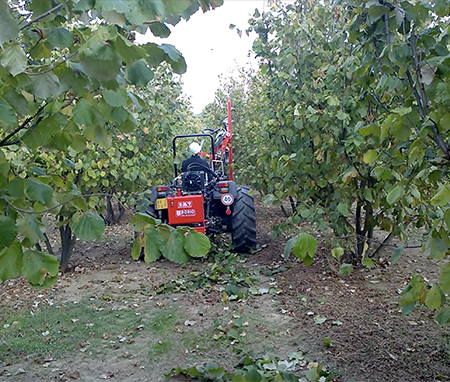The processing of our products does not only start in the factory, but starts first of all from the countryside and the annual cycle of events.
The new hazel groves require a lot of care in the first years after planting: they are extremely fragile, they have to be pruned wisely and gradually and it is necessary to remove the weeds that steal nourishment and remove light from the small hazelnut plants.
We have to wait 10 years for a new plant to reach full production.
In The Countryside
Autumn - Winter period
In this period, we carry out the fertilisation of the soil using only organic fertiliser in our plots located in the Langhe.
Then we prune the hazelnut, both mechanically and manually.
Spring - Summer period
After having prepared the soil by chopping, the harvest takes place and then the disbudding is carried out, i.e. the green pruning that is carried out on the core.
August - September period
At the end of summer, the mechanical harvesting of hazelnuts takes place.


In The Factory: The Manufacturing Process
As the hazelnuts are harvested they are brought to the farm where a cleaning plant separates them from foreign bodies such as stones, leaves, earth and pieces of wood.
Once cleaned, the hazelnuts are dried naturally or in a dryer, based on the degree of humidity detected at the time of harvesting.
They are then stored in mesh containers to ensure good ventilation and prevent the formation of mould and aflatoxins.
We always keep the hazelnuts in their shells and only shell and roast them to the desired degree when an order is placed so as to ensure maximum freshness of the product.
Before shelling, the hazelnuts are calibrated and separated according to their diameter, from a minimum of 12mm to a maximum of 21mm.
Based on the calibre, the height of the crusher that breaks the shells is set and the diameter of the holes in the screens separating the shells and kernels is chosen.
The shells are passed through a second ventilated screen in order to recover the hazelnuts which have broken in half and which would otherwise be lost.
The whole kernels instead end up in another calibrator that divides them by size from 10mm to 16mm.
Production phases
Hazelnuts of larger sizes are vacuum-packed raw or roasted, while smaller sizes and half kernels are processed into chopped hazelnuts, flour, paste and cream.
A computerised air suspension roaster allows a homogeneous and thorough roasting; the kernels are cooled only when the hazelnuts have internally reached the temperature that corresponds to the desired degree of roasting.
After roasting, the kernels are sorted by means of an optical sorting machine equipped with high-definition cameras, which detects any hazelnut defects (bugs and unpeeled kernels) and discards the individual kernels concerned by means of precise compressed air blows.
Before vacuum packing, the roasted hazelnuts go through a further final sorting phase on a sorting belt supervised by expert personnel.
The hazelnuts to be used as chopped hazelnuts are crushed by means of rollers set at a specific height, which determines the final grain size of the product (small grain and big grain).
The hazelnuts to be used for flour production, after roasting if necessary, are crushed by rollers equipped with blades that pulverise the kernels without extracting the oils.
The hazelnuts to be used for the production of the paste, after having reached the desired degree of roasting, are put into a rung mill which operates a pre-creaming process by extracting the oils and producing a raw paste.
A ball mill refines this raw paste by reducing its grain size until it becomes impalpable.
The manufacturing process lasts about 50 minutes and is carried out entirely at a controlled product temperature below 35°C in order to preserve all the characteristics of the hazelnut.
Finally, a very fine vibrating screen sieves the paste removing any vegetable fibre skins that the mill cannot grind.
The hazelnut cream is obtained by adding sugar and cocoa to the hazelnut paste during the refining phase inside the ball mill.






